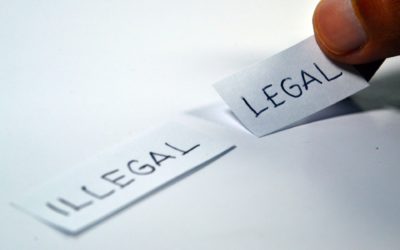The seizure of trademarks
Among the set of enforcement measures, or precautionary measures, which are open to creditors through bailiffs, are certain specific procedures in which our study has become a speciality.
These procedures include the seizure of airplanes or helicopters, the seizure of taxi licences, or the seizure of liquor licences and boats.
There is also a very original and particularly effective procedure: the seizure of trademarks. Our firm has indeed specialised in trademark seizure. We will first of all see why a trademark is seizable, before studying how it can be seized.
The trademark, an intangible element of the debtor's patrimony :
Article L 112-1 of the Code of Civil Enforcement Procedures (CPCE) provides that
"...seizures may be made on all property belonging to the debtor..."
and Article L 231-1 of the EPC adds :
"Any creditor with an enforceable title establishing a claim for money and due may have the intangible rights, other than claims for sums of money, held by his debtor seized and sold. »
The trademark, which can be assigned, has a certain patrimonial value, depending on its reputation. It is undoubtedly an intangible asset of the debtor's patrimony. Consequently, it can be seized.
Remember that a trademark can be a name, a logo, a visual representation, a colour, a smell, or even a sound, and recently it has been possible to register a trademark in tactile form (the ORANGE trademark in Braille was the first tactile trademark to be registered in France).
To find out whether a person is the owner of a trademark, our study consults the database of the National Institute of Intellectual Property (INPI).
Finally, be aware that the seizure of trademarks can be carried out both in execution of an enforceable title (judgment, etc...) and as a precautionary measure before any trial!
The protective attachment of trademarks :
In practice, the creditor shall submit, through his lawyer, a reasoned petition accompanied by all documents in support of his application to the enforcement judge of the place of seizure. As the seizure is carried out at the INPI's headquarters, it is necessarily a bailiff with jurisdiction in the Hauts de Seine (92) who can proceed with the seizure of trademarks.
The prescription once obtained is then handed over to our study which carries out the due diligence with the INPI. The seizure order makes the trademark unavailable and therefore cannot be transferred by its owner. It is immobilized to guarantee payment of the claim. Within eight days, the Bailiff denounces the measure to the debtor, and within one month, the creditor must summon the debtor to the court.
At the same time, the sequestration may be challenged by the debtor before the execution judge. The debate between the debtor and the creditor then becomes adversarial. The judgment of the execution judge may be appealed against.
Seizure of marks, in forced execution :
With an enforceable title (judgment, summary proceedings, notarial deed, etc...) ordering payment of a sum of money, our firm takes care of the execution and seizure of trademarks in the hands of the National Institute of Intellectual Property. The act of seizure renders the trademark unavailable and therefore can no longer be transferred by its owner. It is immobilized to guarantee payment of the debt. Within eight days, the Bailiff shall denounce the measure to the debtor, and after one month it may be sold.
Our office takes care of all the formalities with auctions.
Moreover, the seizure is a relatively technical act, requiring the completion of a CERFA form in collaboration with the INPI, and requiring the payment of fees to the INPI (27 euros per trademark seized, with a maximum of 270 euros). Our firm will take care of paying these fees and filling out the CERFA form for you.
To contact us, you can use the detailed means by clicking here
Flavigny aniseed: the oldest brand in France, dates back to 1591.



